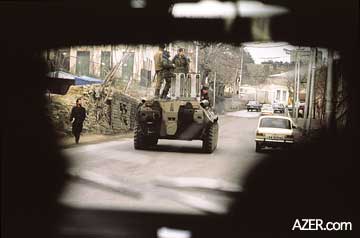Thirty years after the demise of the Soviet Union, it is perhaps not surprising that a number of myths have emerged about that event. Perhaps the one that is most widely believed but is demonstrably false is that the demise of the USSR was a bloodless event. In fact, it was very bloody but not in the center.
To be sure, very few people died in August or December 1991 at the center or indeed anywhere in the former Soviet space, especially if one compares the period of the immediate demise of the USSR with the collapse of India and Yugoslavia, to give but two of the events with which the Soviet collapse is most often compared.
But deadly violence was widespread immediately afterward across the country if not in Moscow and St. Petersburg. The Lenta news agency has now provided a useful listing of the major conflicts of that period and the number of victims each claimed:
- The Georgian-South Ossetian Conflict (1991-92) – 1500 dead
- The Qarabagh Conflict (1991-94) – 28,000 to 38,000 dead
- The Ossetian-Ingush Conflict (1992) – 600 dead
- The Transniestria Conflict (1992) – more than 1,000 dead
- The Georgian-Abkhazian Conflict (1992-93) – 16,000 dead
- The Civil War in Tajikistan (1992-97) – more than 60,000 dead
- The First Russo-Chechen War (1994-96) – more than 55,000 dead
In addition, there were thousands more injured, often seriously, and millions who fled from these conflicts as well as for other reasons. None of this should be forgotten by those now looking back to the events of 30 years ago.
Read More:
- Not USSR collapse but Bolshevik coup ‘20th century’s greatest geopolitical disaster’
- Demise of USSR might have been delayed but not prevented by Bolshevik-style bloodshed, Milyuk says
- Vitaly Portnikov: “The ghost of the Soviet Union was definitively buried in Ukraine in 2014”
- Black January in Baku – the time and place the Soviet Union died
- Why do many Westerners show sympathy to Russia and Communism – but not to their victims?
- Two anniversaries of Soviet state terrorism must not be forgotten
- The Russian Federation will disintegrate but not ‘just like the Soviet Union did’
- The West’s purchases of gas from USSR prolonged our occupation by 10 years — Estonian Ambassador to Ukraine







